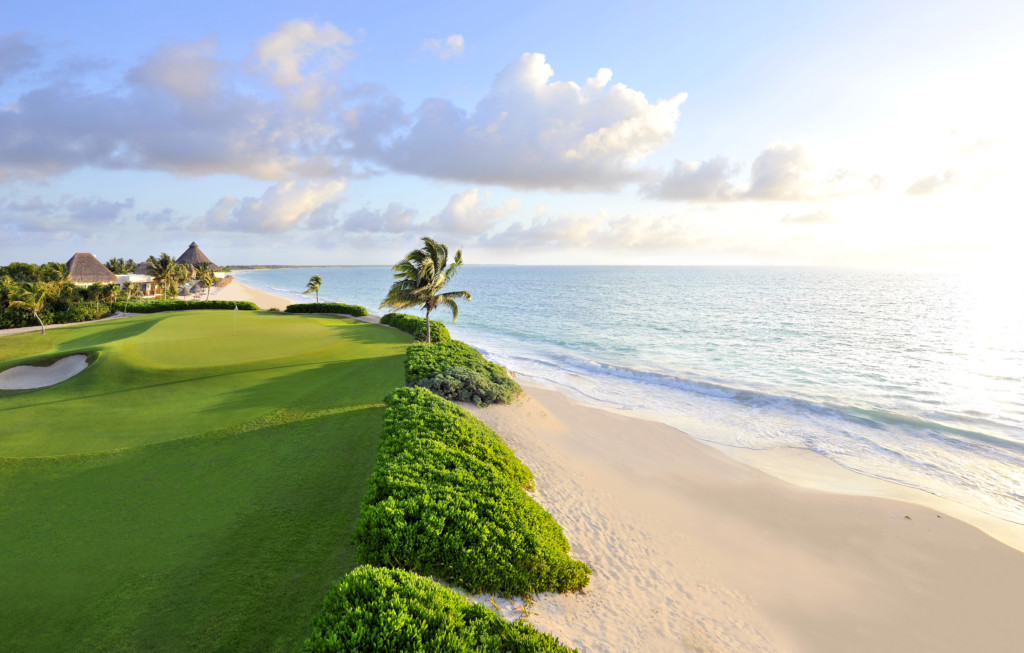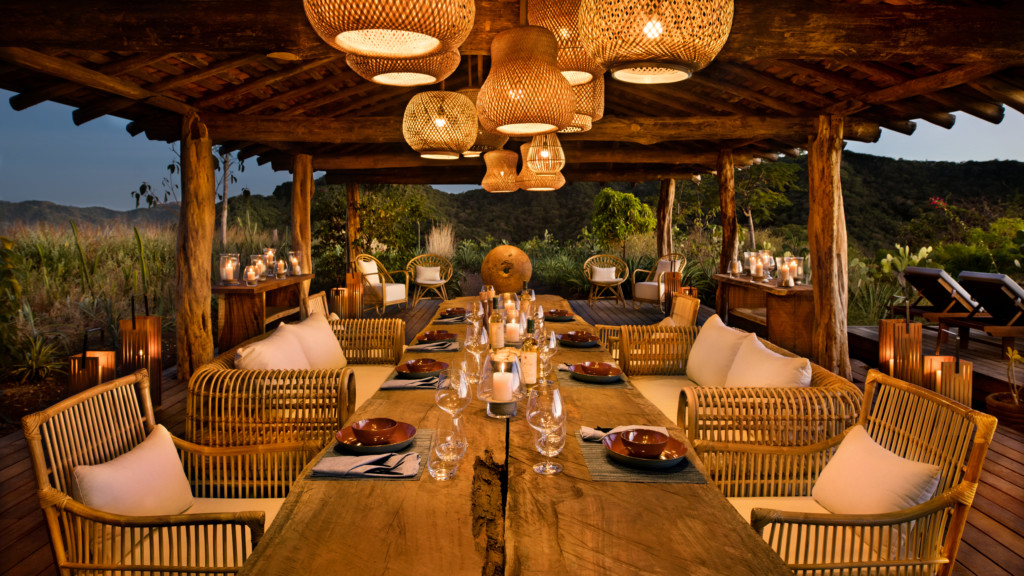Their songs fill our backyards, forests, jungles and coastlines—a mysterious language of music. They inspire dreams of flight, pollinate plants, disperse seeds, and keep ecosystems in balance. These soaring avian dinosaurs are also an existential reminder of 150-million-years of evolutionary biology. And their health as a species is a bellwether of our own planet’s fate and well-being. But tragically, according to the Cornell Lab of Ornithology, 2.9 billion birds have vanished in the (US and Canada) since 1970. A staggering number indeed. The recently published Audubon report, Survival by Degrees predicts that two-thirds of North America’s birds are at risk for extinction due to habitat loss and the devastating effects of climate change. So if you are a fan of our winged friends, then make haste to travel into the wild and witness these miracles of nature, but also do your part to take action to address climate change, lest we may lose nature’s symphony and ourselves.
Riviera Maya, Mexico
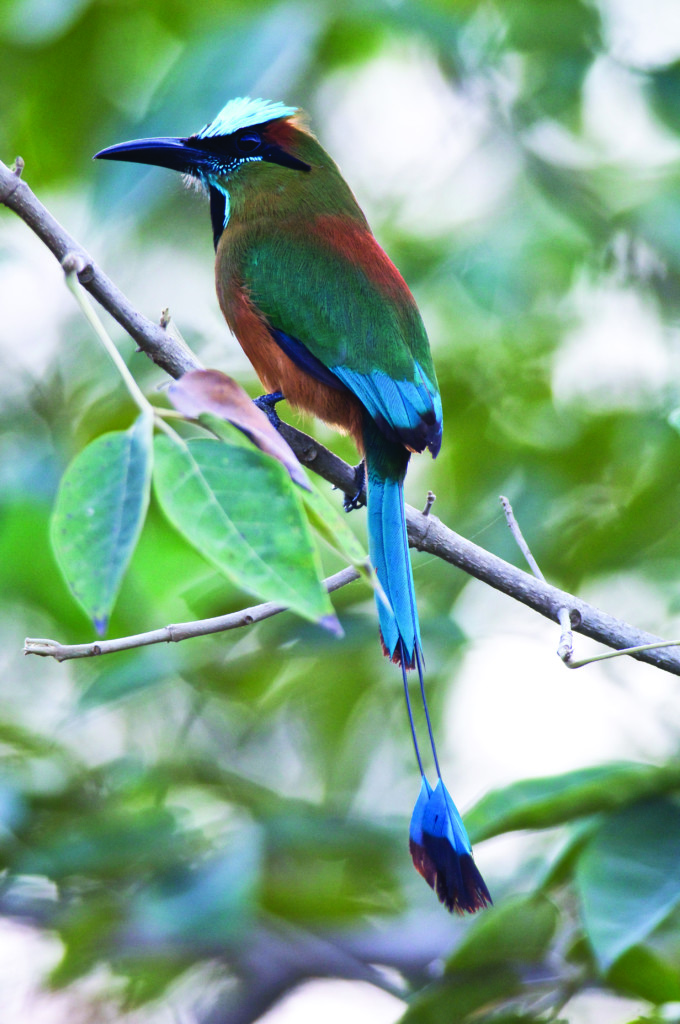
There are those devoted souls who will sit all day, patiently in the bush, for a three-second glimpse of a Resplendent Quetzal; who can wax poetically about the mating rituals of the Greater Bird of Paradise or distinguish the call of the Malabar Whistling Thrush from that of a Musician Wren. I am not one such person, nor have I ever considered myself to be part of the global birder tribe. I don’t know difference between a flycatcher or a sapsucker. It is not, in fact, my Big Year. But I will tell you this, I fell in love with birds after traveling to the Yucatan Peninsula and landing in Mayakoba.
Part of Riviera Maya, some 45 minutes south of Cancun, Mayakoba is a mystical square-mile Eden, home to four lavish hotels and four ecosystems in balance—mangroves, sand dunes, low forests and coral reefs. Six miles of jade-tinted clear canals connect this natural wonderland, also refuge for 159 species of birds. Electric-powered silent skiffs deliver guests from resort to resort, while also offering mangrove eco tours and private birding safaris. Armed with a camera and a copy of The Birds of Mayakoba, I spend a few days navigating the greenbelt waterways in the company of the resident biologist. I love this coastal jungle—the cacophonous song and shriek of its creatures, the warm clutch of tropical heat, and the psychedelic shades of green and blue. Metallic dragon flies patrol the shore, turtle heads peak from the murky mangrove ponds, shy coatis peer from the brush, and armored iguanas bask in the sun.
And the birds: bashful Boat-billed Herons tuck into the mangroves, bright orange Hooded Orioles flit from branch to branch, Yellow-foreheaded Waterwalkers strut past snail-eating Limpkins, while prehistoric-looking Wood Storks stand stoically along the shore. Beyond these Mayakoban denizens, more than a billion birds migrate over the Yucatan peninsula and a majority stop, as it’s the first landmass to offer a resting spot when crossing the Gulf of Mexico.
On a second excursion in a bath of late afternoon light, our boat rounds a bend revealing a massive rookery with dozens of birds dotting the greenery like ornaments on a tree. The roost shivers with mixed species: a double-crested Cormorant fans its feathers, a juvenile Ibis trio share a branch, an elegant Anhinga strikes a perfect pose—her neck seemingly wrapped in a mink stole. A Snowy Egret with its brilliant yellow feet challenges me to a staring contest. Rattles, warbles, and whistles fill the air. Unafraid of humans, this carnival carries on as if we are not there, a testament to the symbiosis of this shared community of humans and wildlife.
The following day, we traverse a nature trail to a kayak drop in and paddle out into a three-dimensional landscape painting with every shade of green imaginable. The impossibly clear water below is a brackish mix of springs and sea water that travels in from tunnels. Cenotes or natural caves with fresh water dot this landscape, and the Mayans once set their cities by these sacred spots.
As our paddles send ripples across the inverted reflections of the reeds and brush, we spy a Green Heron cleverly using a feather as a tool to catch fish. As the invisible presence of crocodiles lends a little adrenalin to our stroke, it occurs to me that in seventh grade biology you read about ecosystems; in Mayakoba you become a part of one.
Fortunately, on our final treasure hunt for wings we discover our greatest avian jewel: the Roseate Spoonbill. She is preposterously beautiful with her etched pink feathers, Esther Williams white-capped head and coquettish smile. She bears the most peculiar markings on her ears as if sporting black DJ headphones. Once on the endangered list when ladies found her feathers fashionable in their hats, the species has thankfully recovered and can be spotted here in Mayakoba. I stare in wonderment at both her and by the fact that I have become a birder.
WHERE TO STAY
Banyan Tree Mayakoba

Equally striking are the dramatic visuals and opulent touches at this all-villa resort from the art-lined, open-air lobby overlooking the giant Banyan Tree that rises from the waterway below, to the elegant villas with private blue-tiled pools and cozy daybeds, so you can float or lounge in a symphony of jungle sounds along with rainforest showers, outdoor tubs, and hammocks too. A collection of new swanky overwater villas and beachfront suites will debut in late 2020.
When Not Birding
Play 18 holes on the Greg Norman course (part of the PGA Tour), pedal your personal cruiser to the beach club for strolls in the sugar white sand or snorkeling in the crystal clear water, or enjoy margs at the pool’s swim up bar. Enjoy a Natura Bissé facial in your personal spa villa set over the lagoon. Dine under the stars on a floating dock surrounded by mangroves at Saffron for authentic Thai cuisine in candlelight, or go Mayan with a traditional HAAB, a five-course Yucatan feast cooked on site with tequila tastings and dancers performing with fire.
Blue Mountains, Jamaica
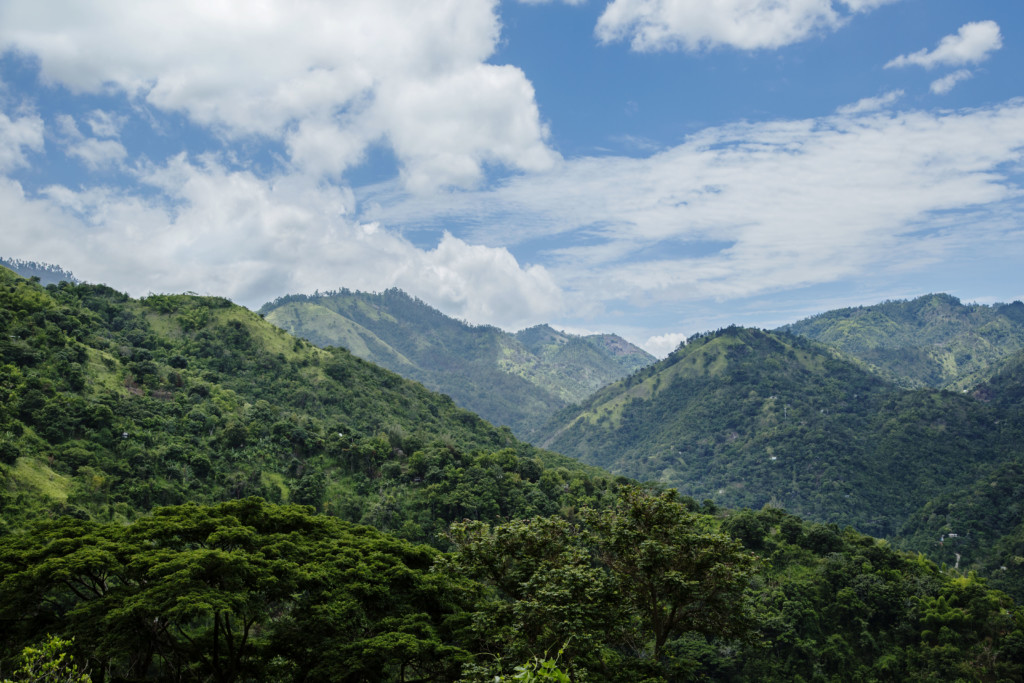
While most people gravitate to Jamaica for its white sandy beach playgrounds, birders should note that this tropical isle is the avian gem of the Caribbean with more than 300 species. A foray into the biodiverse Blue Mountains, part of a UNESCO World Heritage Site, reveals world-class coffee plantations and epic bird watching along a network of trails cloaked by giant ferns, flowering plants, orchids and vines. All 28 endemic species reside here in the lush forests, along with migratory species seeking refuge from winter. Look for the Jamaican Woodpecker, Yellow-shouldered Grassquit, Chestnut-bellied Cuckoo, Jamaican Euphonia, Jamaican Spindalis, Greater Antillean Bullfinch, Blue Mountain Vireo, Olive-throated Parakeet, Jamaican Tody, Loggerhead Kingbird, and both Red-billed Streamertail and Vervain Hummingbirds. In the early morning cool mist you may hear the haunting cry of the Jamaican Rufus-throated Solitaire or catch sight of the rare Crested Quail-Dove or Jamaican Blackbird. Friendly rangers Holywell National Park readily offer advice to help track the birds on your list, while the truly adventurous can opt for the 7-mile trek to Blue Mountain Peak at 7402 feet where you can see Cuba on a clear but rare day.
WHERE TO STAY
Strawberry Hill
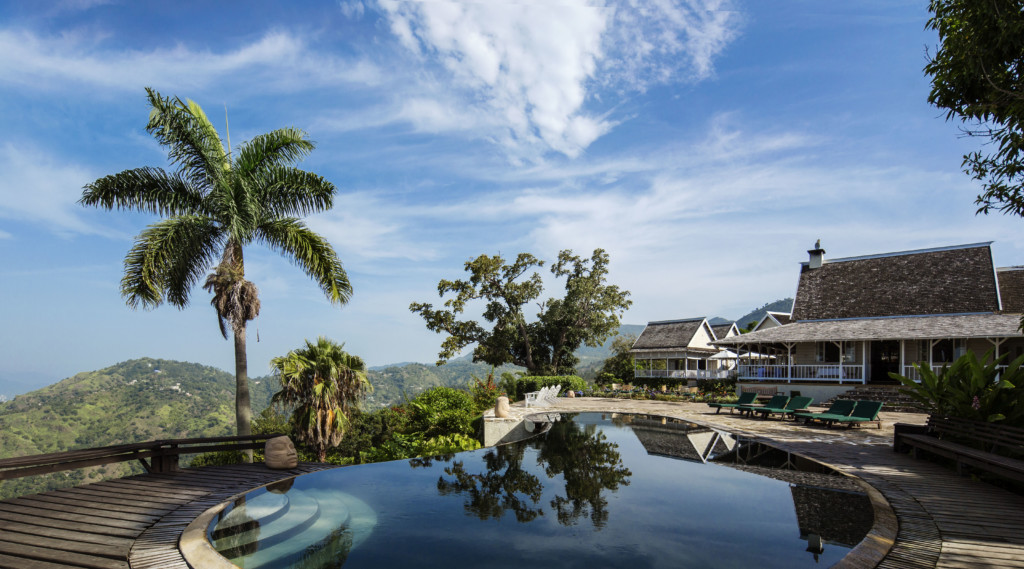
Chris Blackwell, the British music legend who launched Bob Marley, U2, Cat Stevens and more, has equally good taste when it comes to his inimitable retreats. Part of his Island Outpost Collection (including Golden Eye and The Caves in Jamaica), Strawberry Hill reveals the majestic beauty of the Blue Mountains outside of Kingston, as it’s set at 3100 feet, affording dramatic views of the jungle, mist-shrouded peaks, Kingston and nearby coffee plantations. Stone pathways lead to 12 charming Georgian-style cottages and two story villas with wraparound verandas styled out with canopied four-poster beds, handmade Royal Hut linens, French doors and hand-glazed terra cotta tiled bathrooms. Onsite bird expert Lyndalee Burks arranges adventures with knowledgeable local guides—think sunrise and sunset treks into the Jurassic Park greenery of the Blue Mountains for a chance to add some of the island’s alluring endemic species to your list. The property’s exquisite gardens also host a flurry of bird activity right outside your door.
When Not Birding

Hike up to 4000 feet to family-run Old Tavern Coffee Estate for a bean-to-cup tour and aromatic tasting, and then head back to the resort to float in the infinity pool, bliss out during a hot stone massage, or downward dog it during sunset yoga. Eat local at the roadside jerk shacks along the mountain road or sip a rum punch, Mon, spiked with Blackwell’s own smooth dark rum while savoring New Jamaican cuisine in the resort’s old plantation-styled dining room. Reggae music fans should undertake a pilgrimage to the Bob Marley Museum in Kingston.
Guanacaste, Costa Rica
One of the top ten birding spots in the world with more than 900 species, Costa Rica is as a mind-bending Eden, rich with wildlife experiences and soul-stirring birdwatching in diverse ecosystems from the cloud forest, humid lowlands, dry forests, to the mangroves or coral reefs. The northwestern province of Guanacaste (gold coast) offers birders distinct experiences as its Pacific coastline teems with sea wildlife creating a dynamic place to espy pelicans, magnificent fragata, Osprey, the endangered Jabiru and other coastal birds, while its tropical dry forests are home to a medley of avifauna such as White-throated Magpie-jays, Turquoise-browed Motmots, Black-headed Trogons, Steely-vented Hummingbird, Orange-fronted Parakeet, Rufous-naped and Banded Wrens, and more. Santa Rosa National Park protects a pristine piece of tropical dry forest, a remarkable landscape for meandering and communing with dry forest bird species.
WHERE TO STAY
Kasiiya Papagayo
This newly minted luxury camp on 123 acres has just five, tented jungle suites overlooking the sea. Avian experiences range from 530 a.m. birding treks along coast and into the wild with resident bird enthusiast Alejandro Jara and trips in electric cars to further traverse the avian-dotted terrain, to kicking back with binocs on your private deck with a Passion Fruit Sour cocktail while sound bathing in birdsong, the hum of cicadas and wild calls of monkeys.
When Not Birding
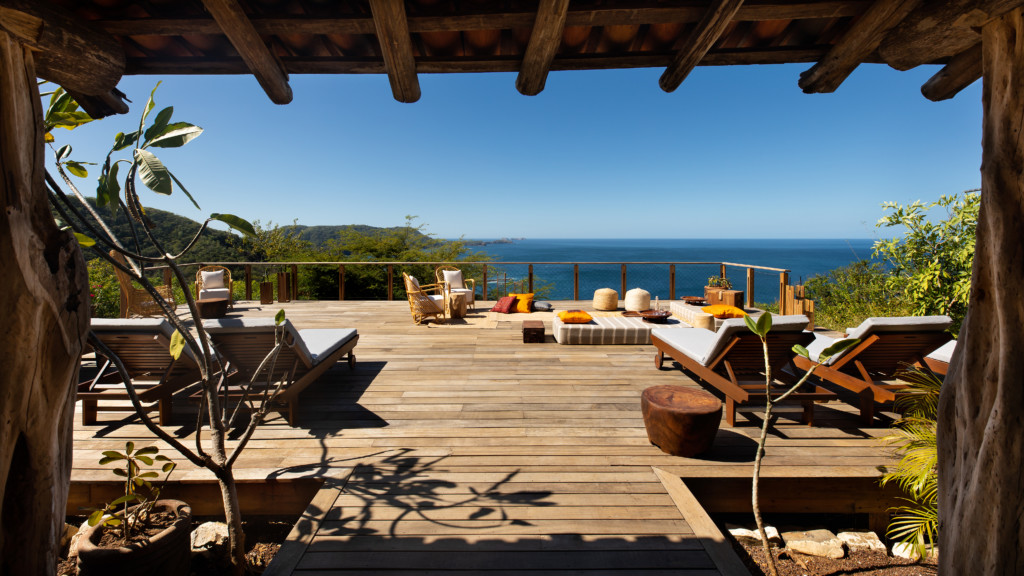
Spectacular snorkeling awaits just off Kasiiya’s golden sands, along with diving in the company of sea turtles and spotted rays. There’s also kayaking, paddle boarding, tree climbing, hiking, fishing, open-air yoga, culinary classes and massage or indigenous herbal treatments with the local healer in a jungle spa tent. Rates start at $560.
eBird
Be a part of the world’s largest biodiversity-related citizen science project and join eBird, created by Cornell Lab of Ornithology. Track your birds with the free mobile app and explore sightings and hotspots around the globe, while also contributing to science and conservation by sharing your data.
How to Help:
For organizations to support and resources to help you and others through this difficult time, check out our Better List.
More from Marin:
- Five of Marin’s Top Musical History Sites You Might Not Have Known About
- Why You Should Sow Spring Seeds Now for Summer Bounty
- The Front Steps Project in Marin County
 Ann Wycoff is a travel and lifestyle writer whose work has appeared in San Diego Magazine, Coastal Living, Modern Luxury, and many more. She lives in Encinitas, CA with her husband and daughter, and believes in traveling with a purpose.
Ann Wycoff is a travel and lifestyle writer whose work has appeared in San Diego Magazine, Coastal Living, Modern Luxury, and many more. She lives in Encinitas, CA with her husband and daughter, and believes in traveling with a purpose.


